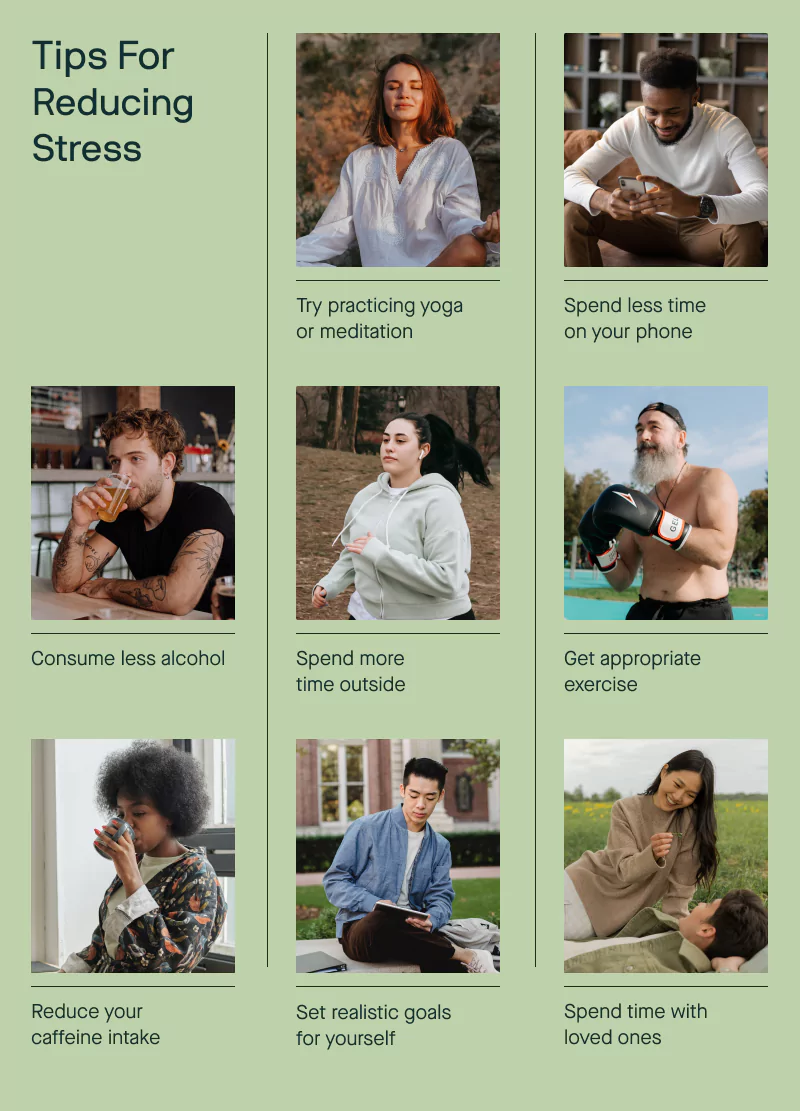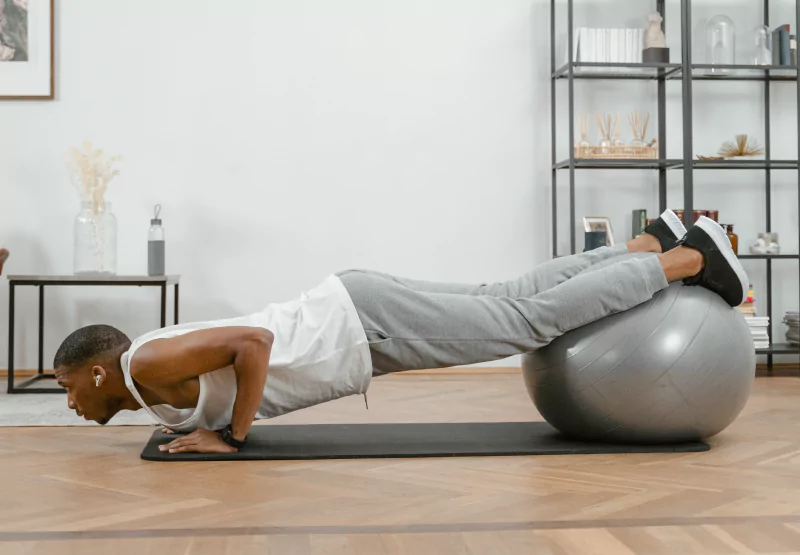What is Metabolic Training?

Key Takeways
There are no quick fixes or shortcuts when it comes to improving your metabolic rate, but you may have seen a type of exercise known as metabolic training rising in popularity lately.
Metabolic training, as the name suggests, is a type of workout that is intended to boost your metabolic rate and increase the calories you burn at rest. But if you’ve seen this term thrown around lately, you may be wondering if there’s any science behind metabolic training.
In this article, we’ll dive into:
- The research around metabolic training
- Evidence-based methods for increasing your metabolic rate
- Tips for getting the most out of your training
The Truth Behind Metabolic Training
Metabolic training combines high-intensity interval training (or HIIT) with resistance training. The theory behind this method of training is that you can train at a high intensity while supporting muscle growth and burning calories.
While there isn’t currently a great deal of research to support this claim, some researchers have found positive metabolic effects of high-intensity training. Proponents of metabolic training believe that by performing compound exercises at a high intensity, you can:

- Maximize calorie burn during exercise and at rest
- Improve your metabolic rate
- Burn fat more efficiently
However, many factors can affect your metabolic rate, such as how you eat, hormonal factors, age, body composition, and more. So, instead of thinking of metabolic training as a magic wand, it may be more helpful to think of it as one aspect of a holistic approach to understanding and possibly influencing your metabolic rate.
What Is Metabolic Rate?
Your basal metabolic rate (or BMR) is a measurement of how many calories your body needs to perform basic survival functions. But beyond your BMR, your body needs additional calories to support other activities you do throughout the day.
The total calories your body requires for everything you do each day is known as your total daily energy expenditure (or TDEE). TDEE is calculated based on the following metrics:
- Basal metabolic rate (BMR)
- Thermic effect of food (TEF)
- Physical activity-associated energy expenditure (PAEE)
Boosting your metabolic rate may help you to burn more total calories throughout the day, which may be helpful for things like weight loss and boosting energy. Research also shows that increasing your lean muscle mass may increase your BMR.
These benefits are part of the reason why the concept of metabolic training has become popular. But, before we get into the types of exercise that make up metabolic training, let’s dig into some other ways you may influence your metabolic rate.
5 Lifestyle Techniques That Are Proven To Boost Your Metabolic Rate
There are lots of lifestyle habits that can support a healthy metabolism. Here are five techniques that will help you do so.
1) Get At Least 8 Hours Of Sleep Nightly

Sleep may influence your metabolic rate in a few ways. According to one experimental study, sleep restriction may lower morning basal metabolic rate. Researchers think it’s possible that sleep loss leads to metabolic changes geared toward conserving energy.
So if you haven’t been sleeping well and are noticing you’re gaining weight, it may be time to dig into your sleeping habits. A good recommendation is to get at least seven hours of sleep each night.
You’ll also want to make sure that you’re getting high-quality sleep, and you can do that by practicing good sleep hygiene (for example sleeping in a dark, cool, quiet room or stopping caffeine intake eight hours before bed).
2) Try An Earlier Eating Window
This may come as a surprise, but eating earlier in the day and avoiding snacking later in the evening or at night may help support metabolic rate. One study found that an earlier eating window may reduce appetite and increase how much fat is burned.
However, it’s important to note that this study did not show significant changes in energy expenditure. Though an earlier eating window may help support weight loss in other ways, it’s still unclear to what degree the altered eating window may directly impact metabolic rate and more research is needed.
You may consider working with a registered dietitian to determine what kind of eating window may help support your metabolic health.
3) Manage Your Stress Levels

How and to what extent stress may impact metabolic rate is hotly debated. However, there is some evidence that alteration of basal metabolic rate is among the many metabolic changes that may take place during chronic high stress levels.
Try implementing lifestyle changes to reduce stress each day such as optimizing your nutrition, getting adequate rest, including appropriate exercise, and spending more time outside.
4) Get Enough Protein
Muscle is more metabolically active than fat, and a key factor in building muscle mass is getting enough protein.
To do so effectively in a process called optimal muscle protein synthesis (MPS), you’ll want to meet your overall protein needs but also disperse how much protein you have throughout the day. So, what’s a good amount of protein to have at each meal or snack?
One study found that consuming 0.4 grams of protein per kilogram of body weight at each meal is a good target to keep in mind for optimal MPS. If you are unsure how much total protein you should be eating, work with a dietitian or healthcare professional for guidance.
5) Drink Enough Water

Hydration is important for so many functions within the body, and boosting your metabolic rate may be a part of this. So, what role does drinking water play in boosting your metabolic rate?
Older studies looked at something called water-induced thermogenesis and suggested that adequate hydration might increase metabolic rate by increasing thermogenesis. Some newer controlled studies have suggested that water-induced thermogenesis may be a small contributor to metabolic rate.
So, how much water should you be drinking? This can vary depending on your activity levels, environment, and other unique concerns. According to experts, general recommended daily fluid intake is about 2.7 liters for women and 3.7 liters for men.
Ways To Boost Your Metabolic Rate With Exercise

Along with these lifestyle tips, might be another way to boost your metabolic rate. In a metabolic training program, you will want to make sure you are targeting each muscle group with a variety of exercises.
Keep in mind that overtraining may be just as detrimental to your metabolic rate as too little exercise. It’s important to listen to your body and make sure you’re not overexercising and fueling properly to see the full benefits of metabolic resistance training.
Studies from the cohorts from the Biggest Loser have shown that rapid and extreme weight loss from certain methods may slow metabolic rate over time. This may then lead to more extreme restrictions being required over time to keep the weight off.
So, how can you get started with metabolic training? Here’s a step by step guide:
Choose Your Exercises
Metabolic exercises can be performed with basic equipment such as dumbbells, kettlebells. Keeping your heart rate up and giving yourself less time to rest than you would in traditional strength training is another important focus here.
The first thing to do when starting on a metabolic training journey is to find a program that focuses on the types of strength training exercises you want to include. Some common metabolic workout exercises include compound movements and bodyweight exercises such as:

- Squats (or jump squats)
- Lunges
- Burpees
- Push-ups
- Kettlebell swings
- Mountain climbers
- Renegade row
- Step ups
- Hang cleans
Strength training helps build muscle mass which, as we know, can increase your BMR. But on a metabolic training plan, you’ll complete these exercises with very little rest, which can also count as cardio training.
Along with supporting your cardiovascular health, cardio exercise is a type of aerobic training that can help increase your PAEE by increasing levels of daily activity. You can get creative and play around with different exercises and rep ranges to target both your upper body and lower body.
Decide Exercise And Rest Intervals
Depending on your preferences and fitness level, you’ll want to decide how frequently you want to exercise, how to structure your workout, and how long you want your rest periods to be.
If you’re a beginner you may want to include a few rest days throughout the week. If you’re more intermediate or advanced your body may be more adapted to frequent physical activity, so you can adjust your plan accordingly.
In metabolic training or HIIT training, researchers advise keeping rest time between intervals limited to around 120 seconds for best results. As a beginner, you may also want to work with a personal trainer when starting out to ensure you are performing exercises properly.
Determine Intensity And Resistance

In addition to high-intensity exercise, low intensity and moderate intensity exercise you can also be beneficial for improving body composition. Low intensity exercise is shown to increase fat oxidation and TDEE during exercise, though it may not have as much of an effect at rest.
Interestingly, while high intensity exercise can be useful for calorie burning, both this type of exercise and moderate intensity exercise have similar benefits when it comes to supporting metabolic rate and increasing insulin sensitivity.
When deciding what kind of intensity to train at may depend on your unique body and what you are capable of doing, especially if you are new to training.
Start With A Warm-Up
Starting with a full-body warm up is an important step to ensure your muscles are being warmed up, stretched, and activated properly. Proper activation of your muscles can also help performance during the workout by supporting circulation and reducing muscle stiffness.
It can also help the body to stay more prepared and active to carry out exercises properly, so remember to always warm up before starting your workout.
End With A Cool-Down Exercise

There are a variety of different ways you can cool down, but they can be grouped into two main categories: active cool downs and passive cool downs. Just like a warm up, cool downs are important for injury prevention and recovery.
You can include things like stretching or even going for a light five minute jog as part of your cool down routine. You may want to discuss the best cool down method for your unique body with your physical trainer.
Exercise Safely And Wisely
As we mentioned earlier, too much exercise can sometimes be just as detrimental for your metabolic health, including your metabolic rate, as too little exercise. So, more is not always better!
It’s important to listen to your body and spot indications of increased stress, such as increased fatigue, worsened sleep, and other concerns. If you are feeling worse with any given exercise approach, always consult with your healthcare team.
It’s very important to ensure your body is getting the proper fuel it needs to get the full benefit of the workout and recover when your body needs it. Consulting a registered dietitian and a personal trainer are two ways to make sure you are fueling right and training safely.
Find the right Nutrisense programto turn insight into progress.
Go Beyond Glucose Data with Nutrisense
Your glucose can significantly impact how your body feels and functions. That’s why stable levels are an important factor in supporting overall wellbeing. But viewing glucose isn't enough. Nutrisense, you’ll be able to learn how to use your body's data to make informed lifestyle choices that support healthy living.
One-to-one coaching
Sign up to access insurance-covered video calls to work with a glucose expert: a personal registered dietitian or certified nutritionist who will help tailor your lifestyle and diet to your goals.
Monitor and measure what matters
With the Nutrisense CGM Program, you can monitor your glucose with health tech like glucose biosensors and continuous glucose monitor (CGM)s, and analyze the trends over time with the Nutrisense App. This will help you make the most informed choices about the foods you consume and their impact on your health.
Find your best fit
Ready to take the first step? Start with our quiz to find the right Nutrisense program to help you take control.

Heather is a Registered and Licensed Dietitian Nutritionist (RDN, LDN), subject matter expert, and technical writer, with a master's degree in nutrition science from Bastyr University. She has a specialty in neuroendocrinology and has been working in the field of nutrition—including nutrition research, education, medical writing, and clinical integrative and functional nutrition—for over 15 years.




